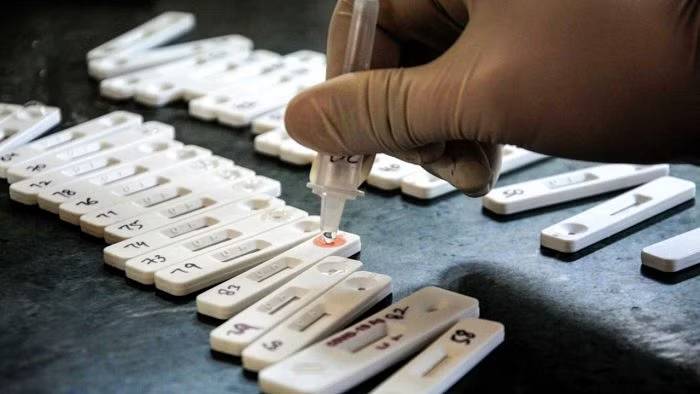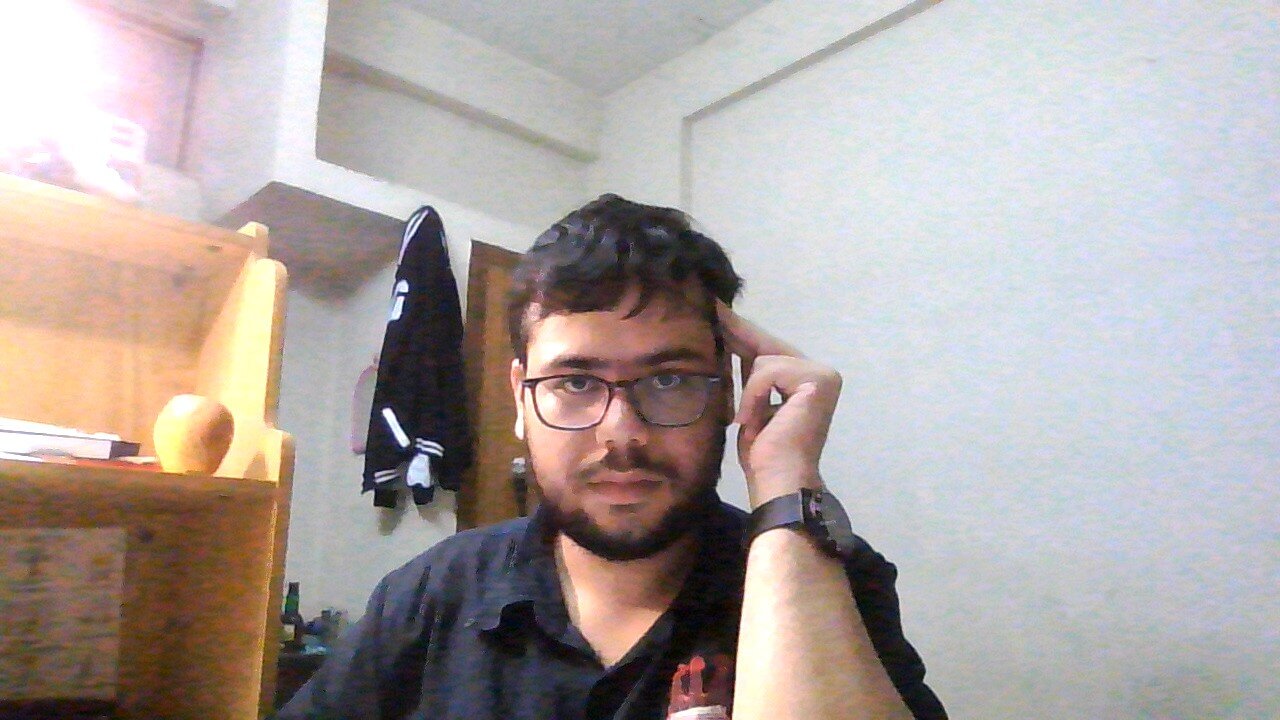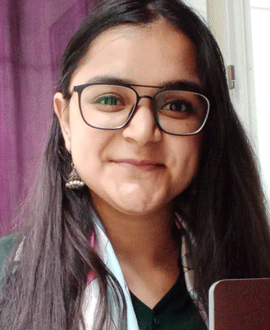

Virus-Host interactions, Antivirals & Vaccines
Our group studies virus-host interactions of emerging human RNA viruses, including Influenza, SARS-CoV-2, and Flaviviruses. We strive to translate this knowledge to develop broad-spectrum antivirals and vaccines. Our expertise is in the multi-omics analysis of virus-host interactions, viral reverse genetics, and small animal models of viral pathogenesis.
We are currently involved in research on the following topics:
In the future, we plan to explore the following research areas:

Email : aditik@iisc.ac.in
Designation : phd_student
Category : Molecular and Cellular Biology

Email : aishwaryam@iisc.ac.in
Designation : support_staff
Category : Microbiology, Virology, and Immunology

Email : gourav@iisc.ac.in
Designation : phd_student
Category : Molecular and Cellular Biology

Email : mansi@iisc.ac.in
Designation : phd_student
Category : Molecular and Cellular Biology

Email : rajesh@iisc.ac.in
Designation : phd_student
Category : Molecular and Cellular Biology

Email : rishad@iisc.ac.in
Designation : phd_student
Category : Molecular and Cellular Biology

Email : rohannarayan@iisc.ac.in
Designation : postdoc
Category : Microbiology, Virology, and Immunology

Email : santhoshn@iisc.ac.in
Designation : postdoc
Category : Microbiology, Virology, and Immunology

Email : shachee@iisc.ac.in
Designation : phd_student
Category : Molecular and Cellular Biology

Email : sudakhina@iisc.ac.in
Designation : phd_student
Category : Molecular and Cellular Biology

Email : sudarshankrupa2001@gmail.com
Designation : support_staff
Category : Microbiology, Virology, and Immunology

Email : sumandeep@iisc.ac.in
Designation : phd_student
Category : Molecular and Cellular Biology

Email : sushmab.y2k@gmail.com
Designation : research_assistant
Category : Microbiology, Virology, and Immunology
Current COVID-19 vaccines effectively reduce disease and death, but there's a need for improved vaccines providing enhanced mucosal protection. This study tested an intranasal (I.N.) vaccine with SARS-CoV-2 antigen, comparing it to subcutaneous (S.C.) delivery in mice and hamsters. I.N. vaccination improved systemic T cell responses, inducing enhanced polyfunctionality and increased T central memory cells. Mucosal vaccination generated antibodies with superior cross-neutralization against variants. I.N. vaccination also offered significant protection from lung pathology in hamsters, suggesting its potential in enhancing COVID-19 vaccines by promoting long-term immune responses.
Evasion and antagonism of host cellular immunity upon SARS-CoV-2 infection provide replication advantage to the virus and contribute to COVID-19 pathogenesis. We explored the ability of different SARS-CoV-2 proteins to antagonize the host’s innate immune system and found that the ORF6 protein mitigated type-I Interferon (IFN) induction and downstream IFN signaling. Our findings also corroborated previous reports that ORF6 blocks the nuclear import of IRF3 and STAT1 to inhibit IFN induction and signaling. Here we show that ORF6 directly interacts with RIG-I and blocks downstream type-I IFN induction and signaling by reducing the levels of K63-linked ubiquitinated RIG-I. This involves ORF6-mediated targeting of E3 ligase TRIM25 for proteasomal degradation, which was also observed during SARS-CoV-2 infection. The type-I IFN antagonistic activity of ORF6 was mapped to its C-terminal cytoplasmic tail, specifically to amino acid residues 52–61. Overall, we provide new insights into how SARS-CoV-2 inhibits type-I IFN induction and signaling through distinct actions of the viral ORF6 protein.
The COVID-19 pandemic highlights an urgent need for effective antivirals. Targeting host processes co-opted by viruses is an attractive antiviral strategy with a high resistance barrier. Picolinic acid (PA) is a tryptophan metabolite endogenously produced in mammals. Here, we report the broad-spectrum antiviral activity of PA against enveloped viruses, including severe acute respiratory syndrome coronavirus 2 (SARS-CoV-2), influenza A virus (IAV), flaviviruses, herpes simplex virus, and parainfluenza virus. Mechanistic studies reveal that PA inhibits enveloped virus entry by compromising viral membrane integrity, inhibiting virus-cellular membrane fusion, and interfering with cellular endocytosis. More importantly, in pre-clinical animal models, PA exhibits promising antiviral efficacy against SARS-CoV-2 and IAV. Overall, our data establish PA as a broad-spectrum antiviral with promising pre-clinical efficacy against pandemic viruses SARS-CoV-2 and IAV.
Human antigen R differentially modulates the translation of SARS-CoV-2 genomic and sub-genomic RNAs
Purpose of review: Virus infections skew the host autophagic response to meet their replication and transmission demands by tapping into the critical host regulatory mechanisms that control the autophagic flux. This review is a compendium of previous reports highlighting the mechanisms that viruses adapt to hijack the host ubiquitination machinery to repurpose autophagy for their sustenance.
Severe acute respiratory syndrome-coronavirus-2 (SARS-CoV-2) viral RNA associates with different RNA-binding host proteins at each stage of its life cycle, although the potential role of human antigen R (HuR) is unclear. Here, we found that HuR bound the 5?-untranslated region (5?-UTR) of SARS-CoV-2, and knockdown and knockout studies revealed the importance of such binding in viral translation. We identified 5?-UTR mutations in SARS-CoV-2 variants of concern that altered the HuR-binding affinity. Interestingly, HuR promoted non-structural protein translation through the genomic 5?-UTR and suppressed the structural protein translation from the sub-genomic 5?-UTR, which required polypyrimidine tract-binding protein binding to the 5?-UTR. HuR knockout increased the sensitivity to remdesivir treatment by decreasing its half-maximal inhibitory concentration by 10-fold. An antisense oligonucleotide (whose binding site overlapped the HuR-binding site) reduced viral RNA production and viral titers in wild-type cells but not HuR-knockout cells, further suggesting that HuR binds the SARS-CoV-2 5? UTR and promotes replication. Our results indicate that HuR supports SARS-CoV-2 life cycle by promoting differential translational reprogramming of genomic and sub-genomic RNAs, implying that HuR can potentially be targeted for therapeutic interventions.
Genetic recombination is an important driver of severe acute respiratory syndrome coronavirus 2 (SARS-CoV-2) evolution, which requires the coinfection of a single host cell with different SARS-CoV-2 strains. To understand the emergence and prevalence of recombinant SARS-CoV-2 lineages through time and space, we analyzed SARS-CoV-2 genome sequences collected from November 2019 to July 2022. We observed an extraordinary increase in the emergence of SARS-CoV-2 recombinant lineages during the Omicron wave, particularly in Northern America and Europe. This phenomenon was independent of the sequencing frequency or genetic diversity of circulating SARS-CoV-2 strains. The recombination breakpoints were more prevalent in the 3'-untranslated region of the viral genome. Importantly, we noted the enrichment of certain amino acids in the Spike protein of recombinant lineages, which have been reported to confer immune escape from neutralizing antibodies and increase angiotensin-converting enzyme 2 receptor binding in some cases. We also observed I42V amino acid change genetically fixated in the NSP14 of the Omicron lineage, which needs further characterization for its potential role in enhanced recombination. Overall, we report the important and timely observation of accelerated recombination in the currently circulating SARS-CoV-2 Omicron variants and explore their potential contribution to viral fitness, particularly immune escape.
Molecular responses to influenza A virus (IAV) infections vary between mammalian species. To identify conserved and species-specific molecular responses, we perform a comparative study of transcriptomic data derived from blood cells, primary epithelial cells, and lung tissues collected from IAV-infected humans, ferrets, and mice. The molecular responses in the human host have unique functions such as antigen processing that are not observed in mice or ferrets. Highly conserved gene coexpression modules across the three species are enriched for IAV infection-induced pathways including cell cycle and interferon (IFN) signaling. TDRD7 is predicted as an IFN-inducible host factor that is up-regulated upon IAV infection in the three species. TDRD7 is required for antiviral IFN response, potentially modulating IFN signaling via the JAK/STAT/IRF9 pathway. Identification of the common and species-specific molecular signatures, networks, and regulators of IAV infection provides insights into host-defense mechanisms and will facilitate the development of novel therapeutic interventions against IAV infection.
Flaviviruses comprise several important human pathogens which cause significant morbidity and mortality worldwide. Like any other virus, they are obligate intracellular parasites. Therefore, studying the host cellular factors that promote or restrict their replication and pathogenesis becomes vital. Since inhibiting the host dependency factors or activating the host restriction factors can suppress the viral replication and propagation in the cell, identifying them reveals potential targets for antiviral therapeutics. Clustered regularly interspaced short palindromic repeats (CRISPR) technology has provided an effective means of producing customizable genetic modifications and performing forward genetic screens in a broad spectrum of cell types and organisms. The ease, rapidity, and high reproducibility of CRISPR technology have made it an excellent tool for carrying out genome-wide screens to identify and characterize viral host dependency factors systematically. Here, we review the insights from various Genome-wide CRISPR screens that have advanced our understanding of Flavivirus-Host interactions.
SARS-CoV-2 virus evolution occurs as a result of antigenic drift and shift. Although antigenic drift has been extensively studied, antigenic shift, which for SARS-CoV-2 occurs through genetic recombination, has been examined scarcely. To gain a better understanding of the emergence and prevalence of recombinant SARS-CoV-2 lineages through time and space, we analyzed SARS-CoV-2 genome sequences from public databases. Our study revealed an extraordinary increase in the emergence of SARS-CoV-2 recombinant lineages during the Omicron wave, particularly in Northern America and Europe. This phenomenon was independent of sequencing density or genetic diversity of circulating SARS-CoV-2 strains. In SARS-CoV-2 genomes, recombination breakpoints were found to be more concentrated in the 3’ UTR followed by ORF1a. Additionally, we noted enrichment of certain amino acids in the spike protein of recombinant lineages, which have been reported to confer immune escape from neutralizing antibodies, increase ACE2 receptor binding, and enhance viral transmission in some cases. Overall, we report an important and timely observation of accelerated recombination in the currently circulating Omicron variants and explore their potential contribution to viral fitness, particularly immune escape
Background: Despite multifactorial evidence, the safe and effective elimination of free-floating micro-organisms remains a significant scientific challenge. ZeBox Technology exploits microbial Zeta Potential, to extract and eliminate them from free-flowing air, using a non-ionizing electric field, in combination with a microbicidal surface.
The SARS-CoV-2 non-structural protein 1 (Nsp1) contains an N-terminal domain and C-terminal helices connected by a short linker region. The C-terminal helices of Nsp1 (Nsp1-C-ter) from SARS-CoV-2 bind in the mRNA entry channel of the 40S ribosomal subunit and blocks mRNA entry, thereby shutting down host protein synthesis. Nsp1 suppresses host immune function and is vital for viral replication. Hence, Nsp1 appears to be an attractive target for therapeutics. In this study, we have in silico screened Food and Drug Administration (FDA)-approved drugs against Nsp1-C-ter. Among the top hits obtained, montelukast sodium hydrate binds to Nsp1 with a binding affinity (KD) of 10.8 ± 0.2 µM in vitro. It forms a stable complex with Nsp1-C-ter in simulation runs with -95.8 ± 13.3 kJ/mol binding energy. Montelukast sodium hydrate also rescues the inhibitory effect of Nsp1 in host protein synthesis, as demonstrated by the expression of firefly luciferase reporter gene in cells. Importantly, it shows antiviral activity against SARS-CoV-2 with reduced viral replication in HEK cells expressing ACE2 and Vero-E6 cells. We, therefore, propose montelukast sodium hydrate can be used as a lead molecule to design potent inhibitors to help combat SARS-CoV-2 infection.
Background: While our battle with the COVID-19 pandemic continues, a multitude of Omics data have been generated from patient samples in various studies. Translation of these data into clinical interventions against COVID-19 remains to be accomplished. Exploring host response to COVID-19 in the upper respiratory tract can unveil prognostic markers and therapeutic targets.
Live visualization of influenza A virus (IAV) structural proteins during viral infection in cells is highly sought objective to study different aspects of the viral replication cycle. To achieve this, we engineered an IAV to express a Tetra Cysteine tag (TC tag) from hemagglutinin (HA), which allows intracellular labeling of the engineered HA protein with biarsenic dyes and subsequent fluorescence detection. Using such constructs, we rescued a recombinant IAV with TC tag inserted in HA, in A/Puerto Rico/8/1934(H1N1) background (HA-TC). This recombinant HA-TC tag reporter IAV was replication-competent; however, as compared to wild type PR8 IAV, it was attenuated in multicycle replication. We confirmed expression of TC tag and biarsenical labeling of HA by immunofluorescence assay in cells infected with an HA-TC tag reporter IAV. Further, we used this reporter virus to visualize HA expression and translocation in IAV infected cells by live confocal imaging. We also tested the utility of the HA-TC IAV in testing chemical inhibitors of the HA translocation. Overall, HA-TC IAV is a versatile tool that will be useful for studying viral life cycle events, virus-host interactions, and anti-viral testing.
Dengue fever is an Aedes mosquito-borne illness caused by any one of the four different dengue virus (DENV) serotypes (1-4) and manifests in the form of symptoms ranging from mild or asymptomatic to severe disease with vascular leakage, leading to shock, and viral hemorrhagic syndrome. Increased risk of severe disease occurs during secondary infection with a virus serotype distinct from that of prior dengue infection. This occurs by antibody dependent enhancement (ADE) of infection, wherein sub-neutralizing antibodies against the virus particles opsonize dengue virus entry via formation of immune complexes that interact with fragment crystallizable gamma receptors (FcγR) on monocytes, dendritic cells, and macrophages. The ADE phenomenon has two components: Extrinsic and Intrinsic ADE. While extrinsic ADE contributes to enhanced virus entry, intrinsic ADE results in heightened virus production by inhibition of type1 interferon and activation of interleukin-10 biosynthesis, thereby favoring a Th2 type immune response. Intrinsic ADE has greater contribution in enhancing Dengue replication as compared to extrinsic ADE. Detailed elucidation of intrinsic ADE during secondary dengue infection can increase our understanding of DENV-pathogenesis and aid in the development of host-targeting antivirals. Here we review literature focusing on intrinsic factors contributing to severe dengue pathology and suggest possible avenues for further research.
Cells infected by influenza virus mount a large-scale antiviral response and most cells ultimately initiate cell-death pathways in an attempt to suppress viral replication. We performed a CRISPR-Cas9-knockout selection designed to identify host factors required for replication after viral entry. We identified a large class of presumptive antiviral factors that unexpectedly act as important proviral enhancers during influenza virus infection. One of these, IFIT2, is an interferon-stimulated gene with well-established antiviral activity but limited mechanistic understanding. As opposed to suppressing infection, we show in the present study that IFIT2 is instead repurposed by influenza virus to promote viral gene expression. CLIP-seq demonstrated that IFIT2 binds directly to viral and cellular messenger RNAs in AU-rich regions, with bound cellular transcripts enriched in interferon-stimulated mRNAs. Polysome and ribosome profiling revealed that IFIT2 prevents ribosome pausing on bound mRNAs. Together, the data link IFIT2 binding to enhanced translational efficiency for viral and cellular mRNAs and ultimately viral replication. Our findings establish a model for the normal function of IFIT2 as a protein that increases translation of cellular mRNAs to support antiviral responses and explain how influenza virus uses this same activity to redirect a classically antiviral protein into a proviral effector.

joydeep.phd@gmail.com

maity@ernet.in

janvipatel1996.jp@gmail.com

khushboo.jain@students.iiserpune.ac.in

abhijithbiji@iisc.ac.in

deokatesangram@gmail.com

swarnimapandey28021995@gmail.com

m.manisharout@gmail.com

shivpriyagaikwad@gmail.com

sagardubeyraj@gmail.com

christymargratjoy@gmail.com

abhijith@iisc.ac.in

oyahida@iisc.ac.in

mannat@iisc.ac.in

chinmayivb@gmail.com